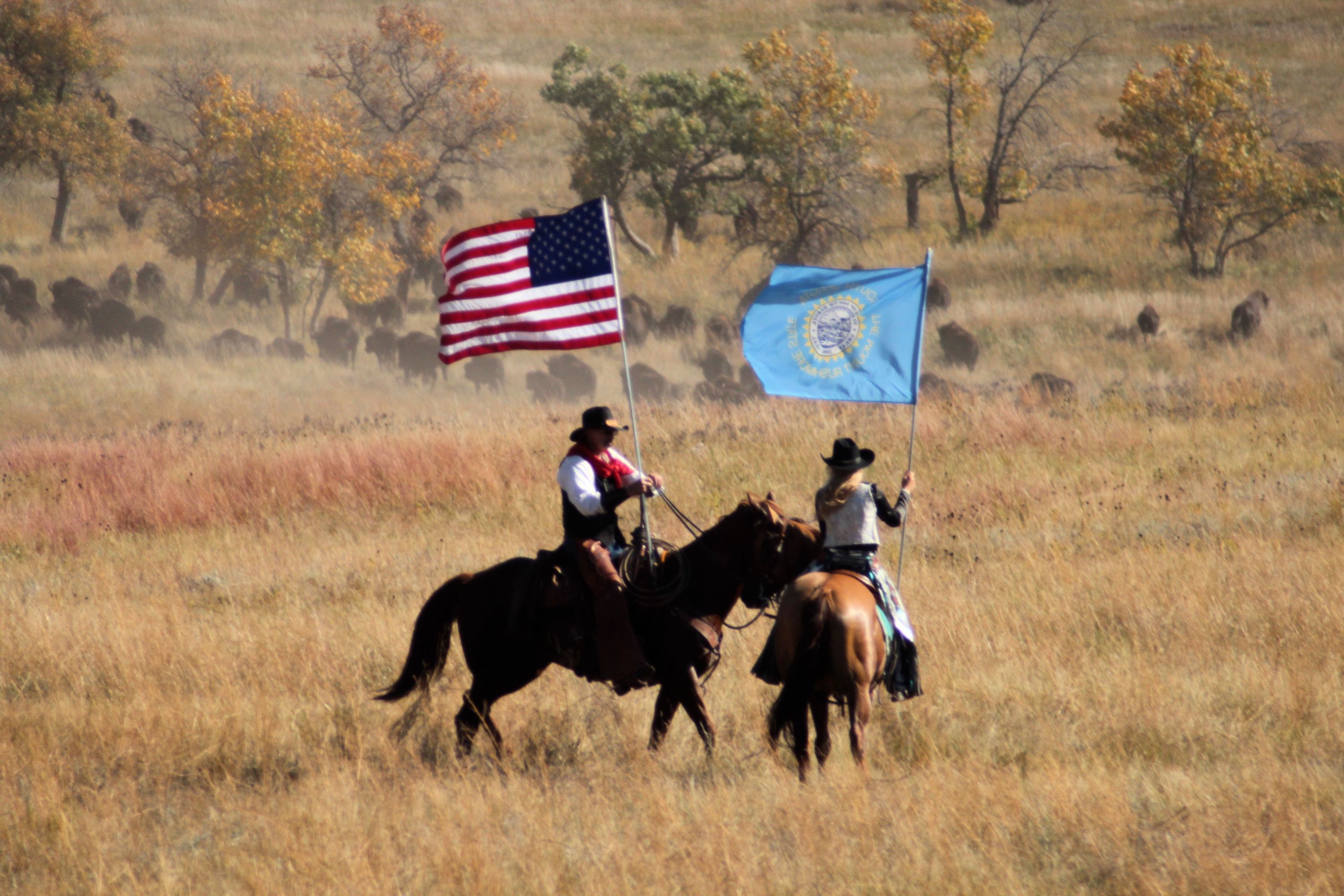Notes from Indian Country
A little history about the buffalo and the Lakota
By Tim Giago (Nanwica Kciji)
Several prominent South Dakotans have stepped forward to lend their support to the push to get Lakota warriors as active riders in the annual
Buffalo Roundup that is staged at Custer State Park by the South Dakota Game, Fish and Parks.
You need to know a little bit about the buffalo and its relations to the Lakota. The Lakota people referred to the buffalo as their relative, either by brother or sister. For centuries the buffalo was the main provider of sustenance to the Lakota providing food, tools, clothing and shelter.
The Lakota people cooked a variety of meals from the meat of the buffalo. They used the skull as a part of their religious ceremonies. The buffalo’s bones were fashioned into useful tools. The buffalo hides were used as beds and covers, and as robes to stay warm in the winter, and the hides were scraped and used to cover the tipis. Buffalo hides could also be softened and made into clothing.
The Lakota camps always moved in conjunction with the migration habits of the buffalo herds. In other words, the buffalo meant everything to the Lakota people.
NBC News: Meet the folks behind South Dakota’s annual bison roundup
Because the Lakota were fierce and fearless warriors and because the Lakota, Nakota and Dakota were too numerous, they could not be relocated to the Indian Territory in Oklahoma and so the United States Government decided that in order to bring them to their heels their source of survival had to be destroyed. This meant that the buffalo herds had to go. In 1800 there were approximately 50 to 60 million buffalo inhabiting the Plains.
It was a tremendous undertaking for the government to destroy these mighty herds, but they nearly did it. First they made it lucrative to the buffalo hunters by paying bounties on the buffalo killed and by setting an artificially high price on buffalo hides. Usually the meat of the buffalo was left on the Plains to rot after the buffalo was skinned.
There have been photos published of buffalo skulls stacked in pyramids 100 feet high. Each pyramid containing nearly one million buffalo skulls. Mission accomplished. With their main source of survival destroyed the tribes of the Great Sioux Nation and of the Northern Plains had to come to terms with the government. The Treaty agreements between the Tribes and the United States began in the mid-1880s.
In order to survive the tribes signed over millions of acres of land with the exception of the Black Hills which were taken from the Sioux by an Act of Congress. When dissenting on the Act of Congress that took the Black Hills from the Sioux people Supreme Court Justice Harry Blackmun wrote, “A more ripe and rank case of dishonest dealings may never be found in our history.” The original award of $105 million for the Hills 40 years ago has now grown to nearly $2 billion dollars and thus far the Sioux people have refused to accept the money.
So what does all of this have to do with allowing Lakota warriors to ride in the Annual Buffalo Roundup? Because it is a part and parcel of Lakota history.
In an earlier column I pointed out the historic significance of the buffalo to the Lakota people. And I also pointed out the terrific boost in tourism this would bring to Rapid City and the Black Hills. I hope this little piece of history points out how much this would mean to the Lakota people.
Journal Columnist Frank Carroll supports this prospect, and as I said, several other prominent South Dakotans have also stepped forward. Now all we have to do is wake up South Dakota Game, Fish and Parks to the idea.
Contact Tim Giago at najournalist1@gmail.com
Join the Conversation

